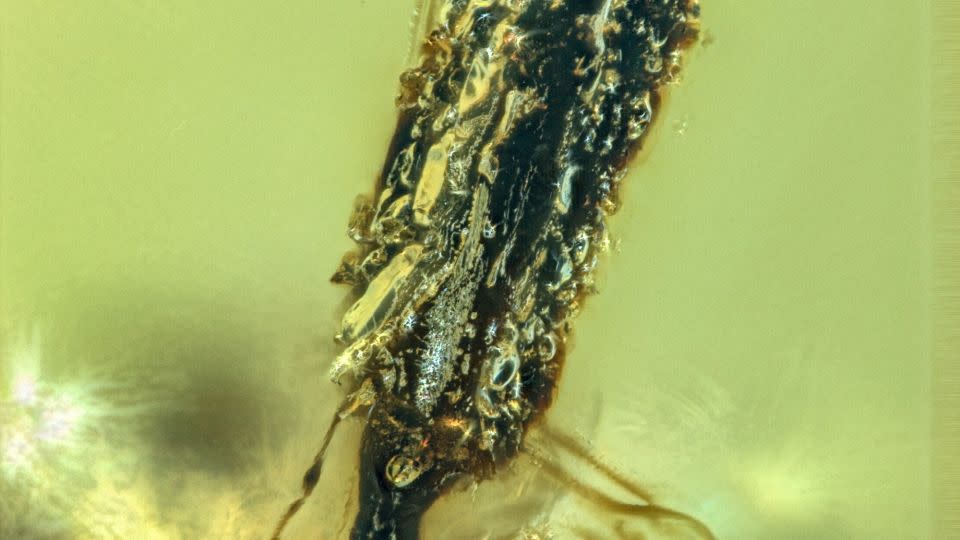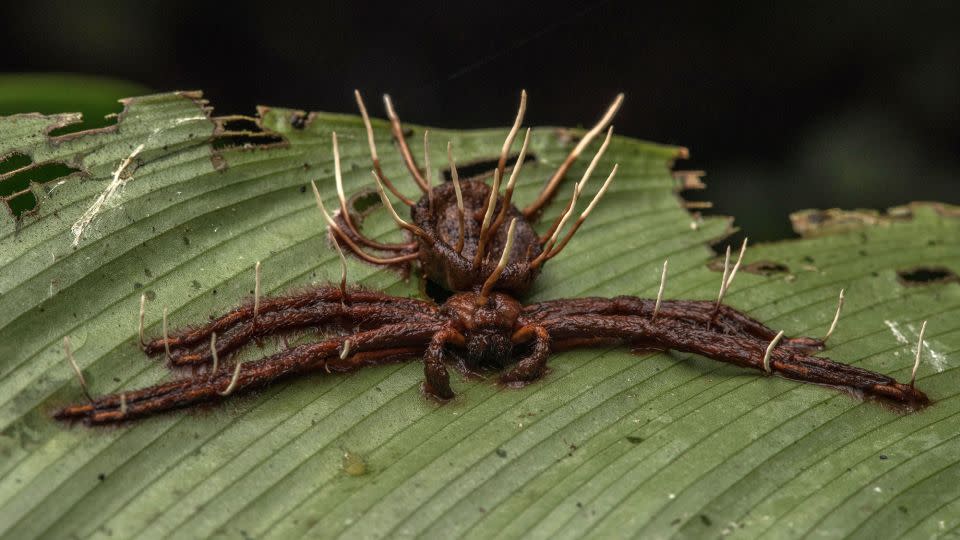Fossilized Horror: Zombie-Ant Fungi Reveal Predator-Insect Relationship in 99-Million-Year-Old Amber
A 99-million-year-old glob of amber has preserved an ancient fly in a truly horrific fashion: with the mushroom-like fruiting body of a zombie fungus bursting forth from its head. This bizarre natural phenomenon, where fungal parasites hijack the bodies of their hosts before ultimately killing them, is now revealed in all its glory through this fossilized specimen. The discovery was made by Yuhui Zhuang, a doctoral student at the Institute of Paleontology at Yunnan University in southwestern China.

Zhuang and his colleagues named two previously unknown species of ancient fungi of the genus Ophiocordyceps from their research on the amber. They found the first, named Paleoophiocordyceps gerontoformicae, on the ant and the second, Paleoophiocordyceps ironomyiae, on the fly. The study, published June 11 in the journal Proceedings of the Royal Society B: Biological Sciences, used optical microscopes to study the tiny pieces of amber and micro-computed tomography to make 3D images of the fungi-infected insects.
Some Ophiocordyceps species that prey on ant species today are known as “zombie-ant fungi” because the fungal parasite can manipulate the behavior of its hosts for its own benefit. This phenomenon even inspired the video game behind the HBO TV show “The Last of Us.” The discovery of these two fossils suggests that terrestrial ecosystems were already very complex in the Cretaceous period, and that Ophiocordyceps, in particular, may have begun to act as “predators” of insects, regulating the populations of certain groups.
The species of fungus that infected the prehistoric ant may be an ancestor of zombie-ant fungi and likely controlled its host’s body in similar ways. Very few specimens of ancient parasitic fungi have been discovered, so little is known about their evolution. The two insects were likely killed by the fungi before getting trapped in the sticky tree resin that ultimately forms amber.

This lost parasite diversity had a significant role in shaping the planet we live on today. “Even as we find a remarkable diversity of organisms entombed in amber, it’s important to remember that we really do only capture the smallest glimpse,” said Phil Barden, an associate professor at New Jersey Institute of Technology’s department of biological sciences. “For any given fossil ant or beetle, we can imagine all of the parasites, fungus, and bacteria that such insects support.”
The fossil is the latest to emerge from Myanmar’s rich amber fields. While amber fossils have been some of paleontology’s most exciting finds in recent years, ethical concerns about the provenance of amber from the civil war-torn region have emerged. Zhuang said the fossils were sourced from Myanmar’s amber markets and were acquired before 2017 and, to his knowledge, were not involved in armed conflict or ethnic strife.














